by Nick Drew | Fri 26 Aug 2022
New Heavyweight, Tackles Finnish Rock
With my return to Finland imminent, today I wanted to take a look back at my article that was previously published in Earthmovers, earlier this year, and bring it to life on the internet complete with video footage.
Located within 600 hectares of typically rugged Finnish land, the massive Seepsula Senkker aggregate quarry and plant lies about 3 km to the north of Helsinki-Vantaa Airport, on the border of Tuusula and Vantaa, and visitors to the country approaching from the north by plane, will have probably noticed the large Seepsula Hollywood style lettering which towers above the workings below, in front of the Eco-friendly solar panels which also provide a percentage of power to some of the facility.
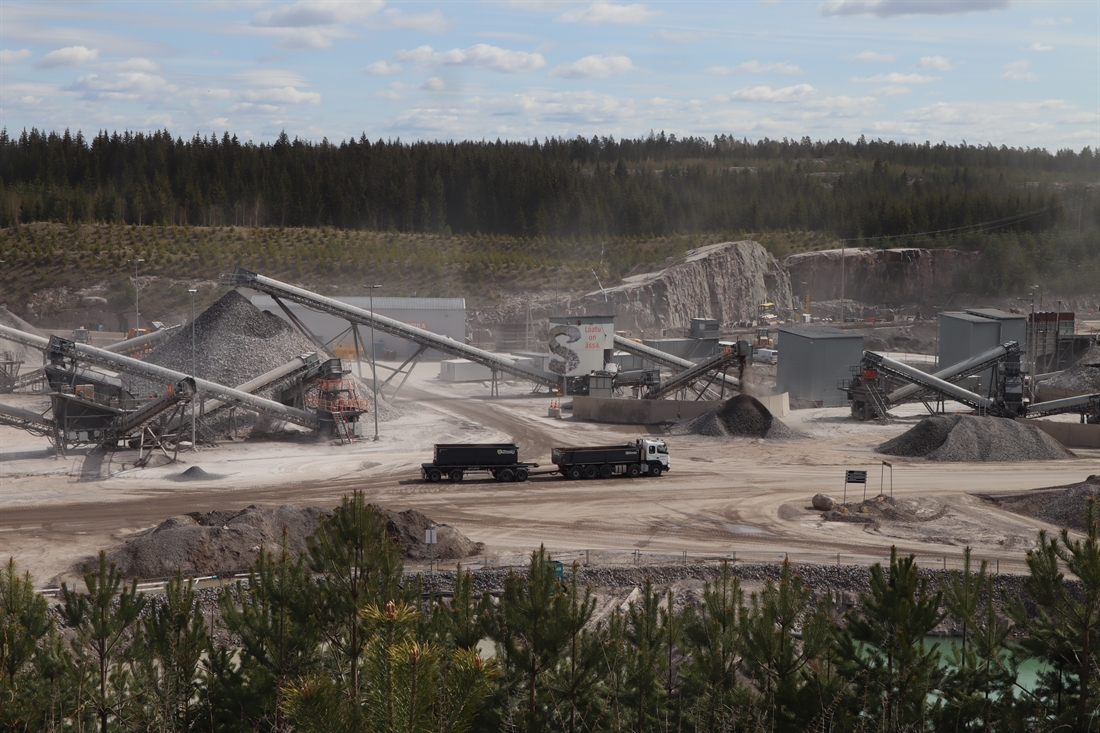
Seepsula Oy is a family business which was started by the 5 Sjöblom brothers back in 1970, and has been trading for over 50 years in the aggregate production industry, so it’s fair to say they know a thing or two about the game and in addition employ some of the finest industry professionals in the business.
The size and sheer scale of this operation is vast and had to be seen to be believed. Fortunately, Earthmovers in conjunction with our friends at Konepörssi, were kindly give a tour of the facility.
.JPG)
The current permitted quarrying area covers some 100 hectares and is expected to last somewhere in the region of 20 years, during which time they expect to blast and extract somewhere in the region of 25-26 million cubic metres of granite limestone.
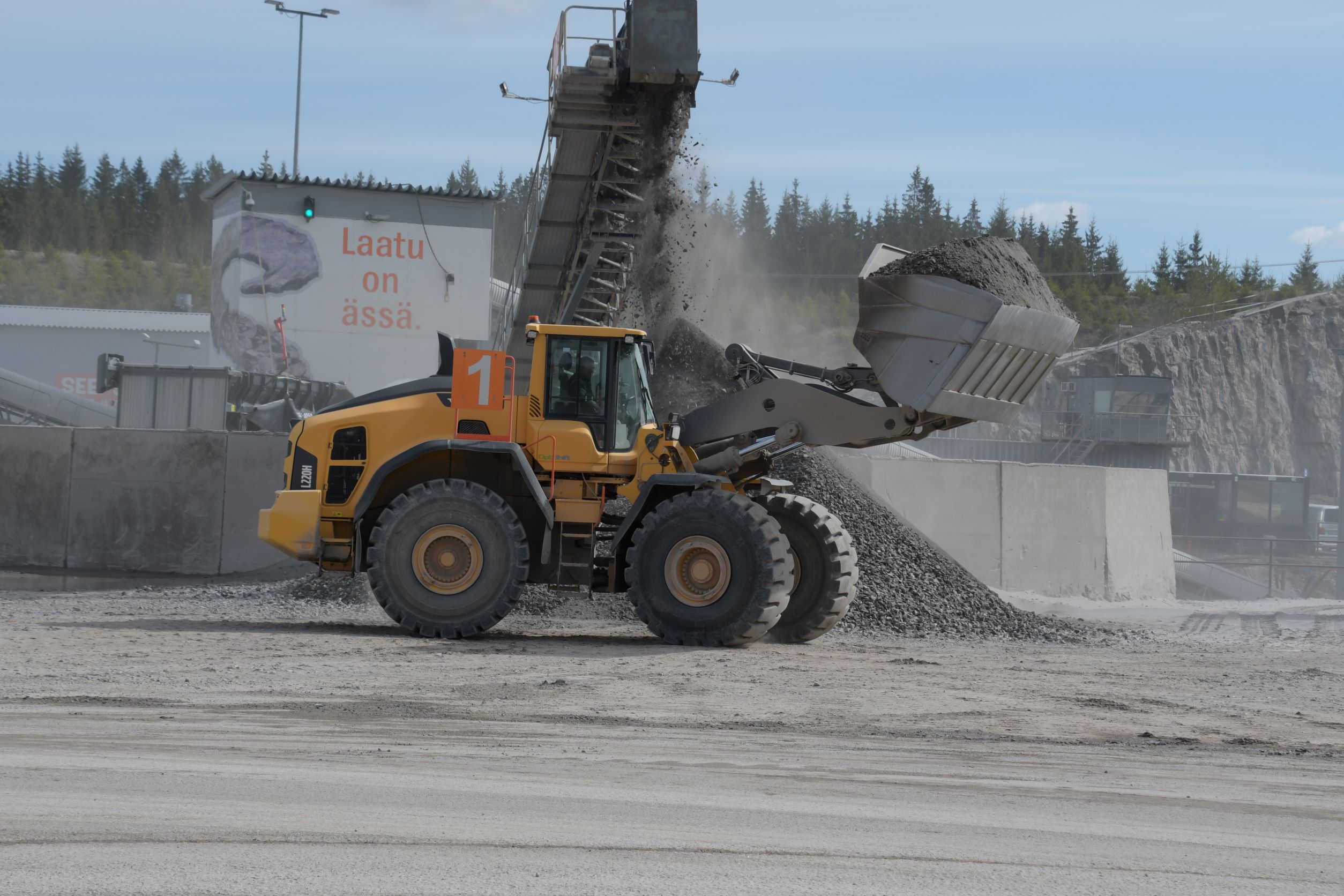
Taking into consideration the whole area which will be quarry licence applied for in the future, it is expected that the extraction of stone here will potentially last for up to 100 years!
Rock here is blasted around once a week by a specialist rock drilling and explosives contractor, with each blast generating around 25 – 40,000 cubic metres of material. The risings from the blast are then dug and loaded by the primary loading excavator, the new Komatsu PC2000, onto a current fleet of three 65-tonne capacity trucks.
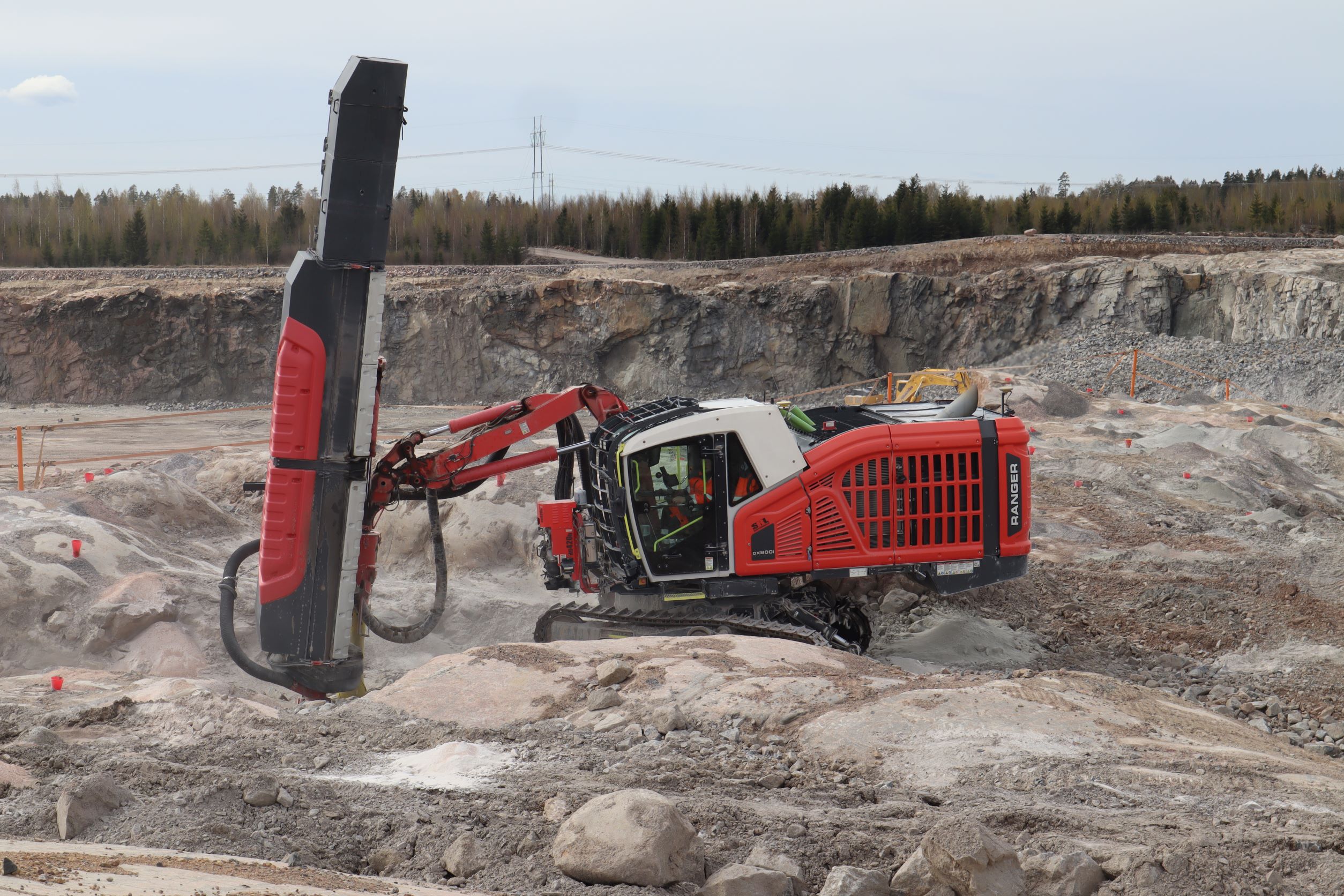
Distance from loading to the tipping point is currently about 1.4-1.6 km’s depending on where the blast is in the quarry. The trucks deliver to the Sandvik primary (150cm opening) and secondary crushers, which is the start of the impressive crushing and screening process, all of which is controlled by one operator housed in an extremely high-tech control room.
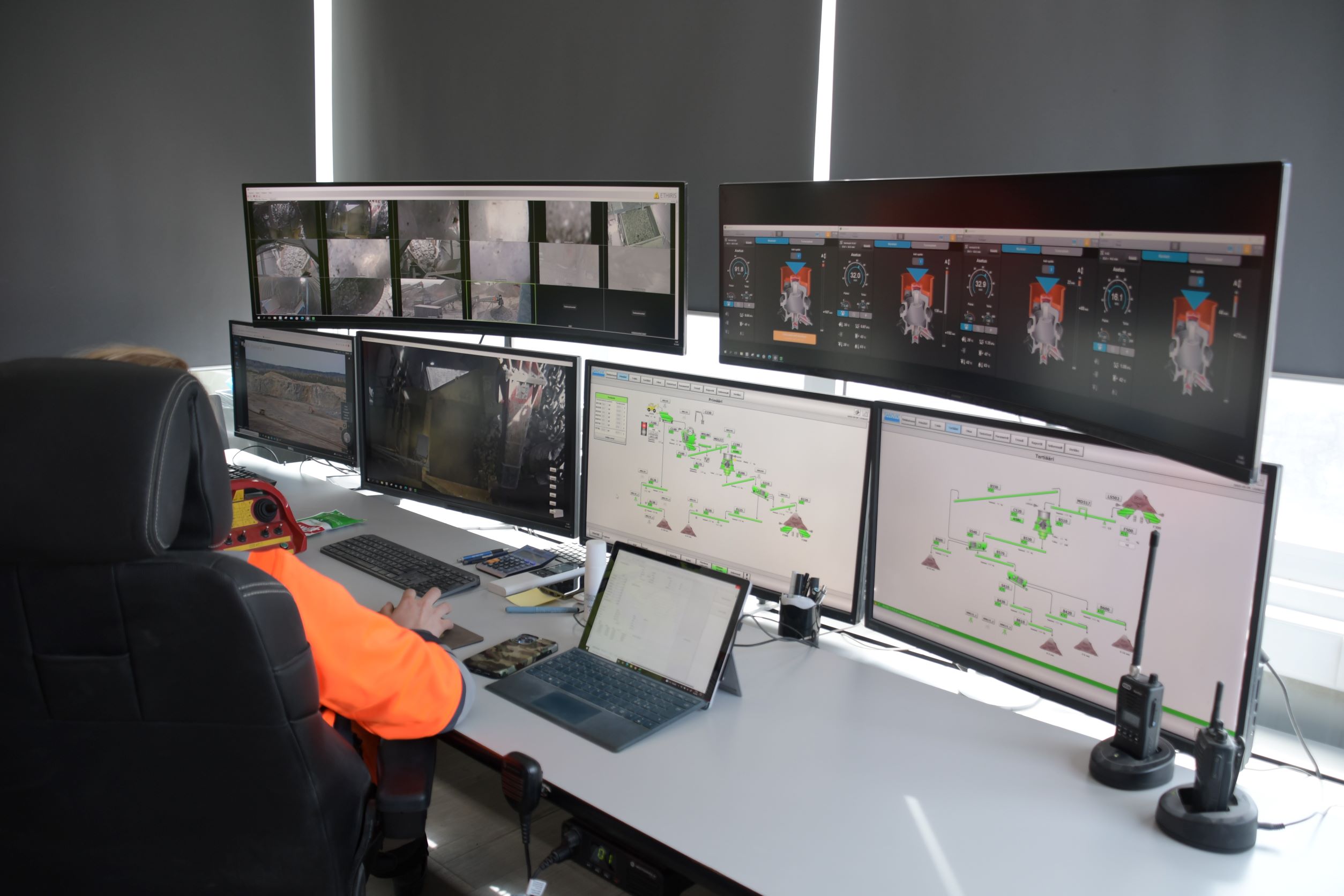
Seepsula currently produce around 10-15 different grades of stone and gravel. Walking around the production area is an eye opener as to how a highly efficient crushing and screening plant should be run, a real hive of activity with Volvo loading shovels being kept busy loading trucks.
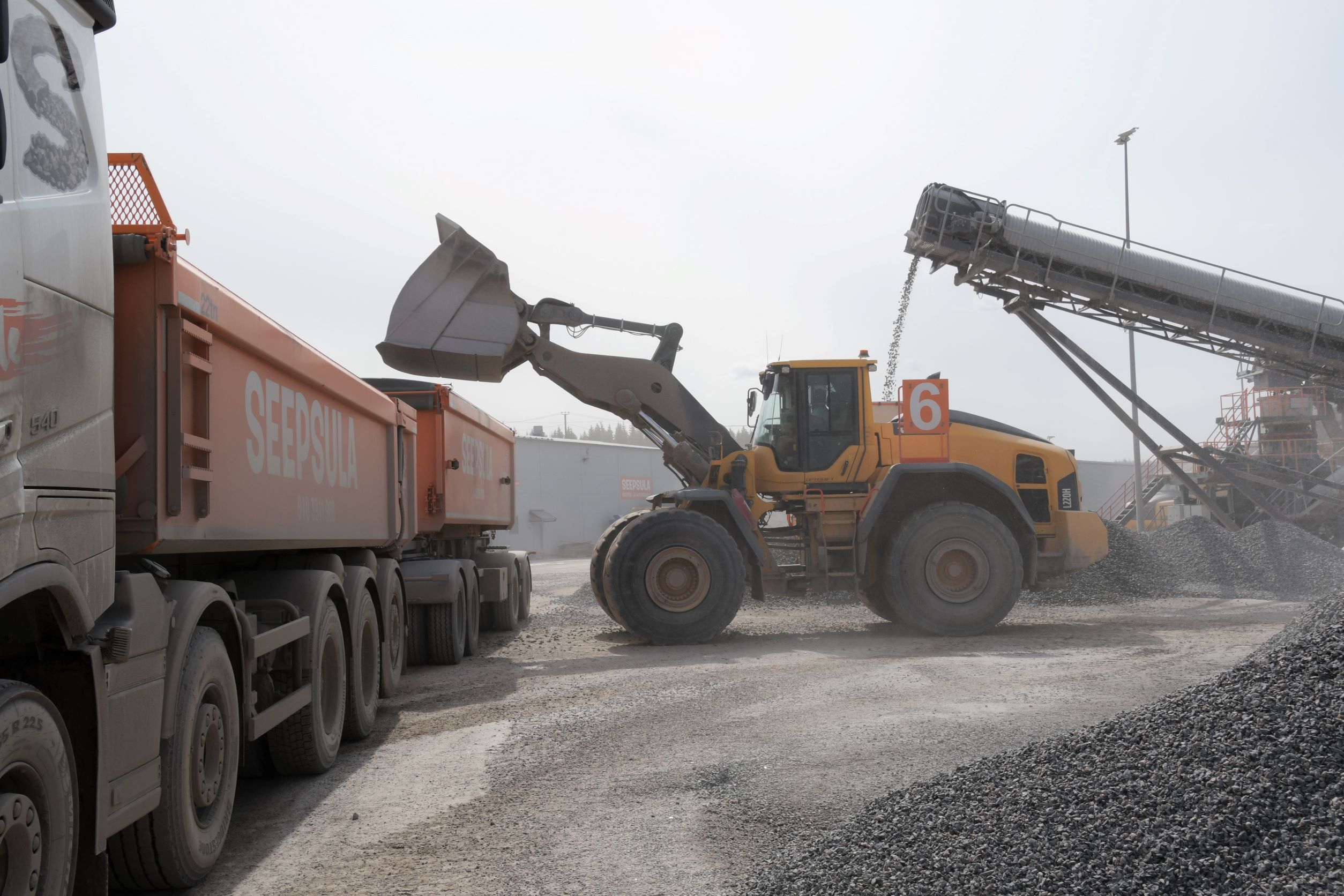
Talking of trucks Seepsula Oy’s CEO Petri Ruostetoja said that there are around 400 truck load movements each day from the facility, delivering to any one of around 1000 customers locally within a 25 km radius of the quarry.
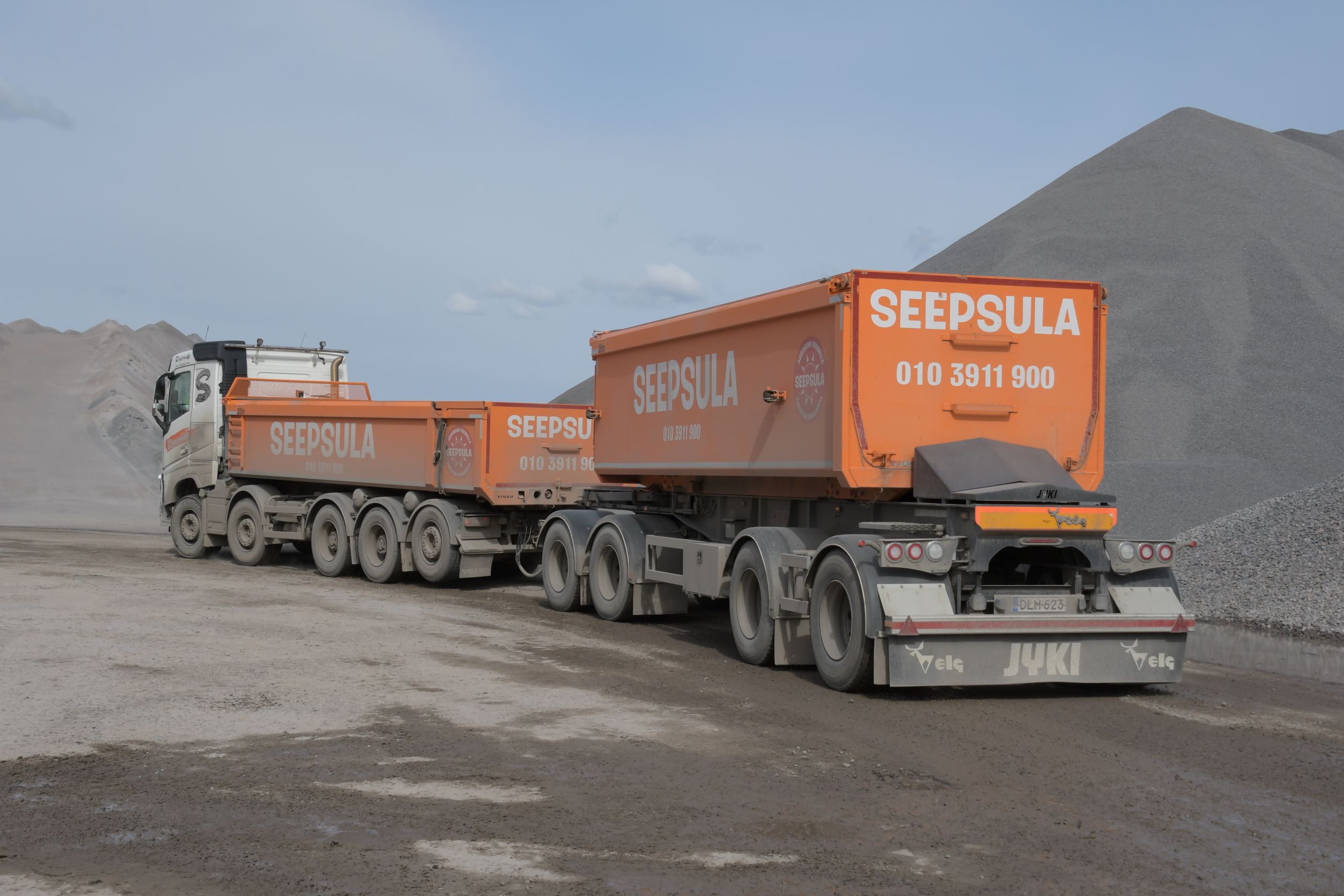
A massive tent is also located in this area as a dry store for what is described as” slippery sand”, which is used in Finland to treat roads and pavements during the long, harsh Finnish winters.
Seepsula employs 20 people directly and with contractors working in the quarry that takes the number to around 50 individuals, add into the mix the lorry drivers that takes the total gaining employment to a nice round 100.
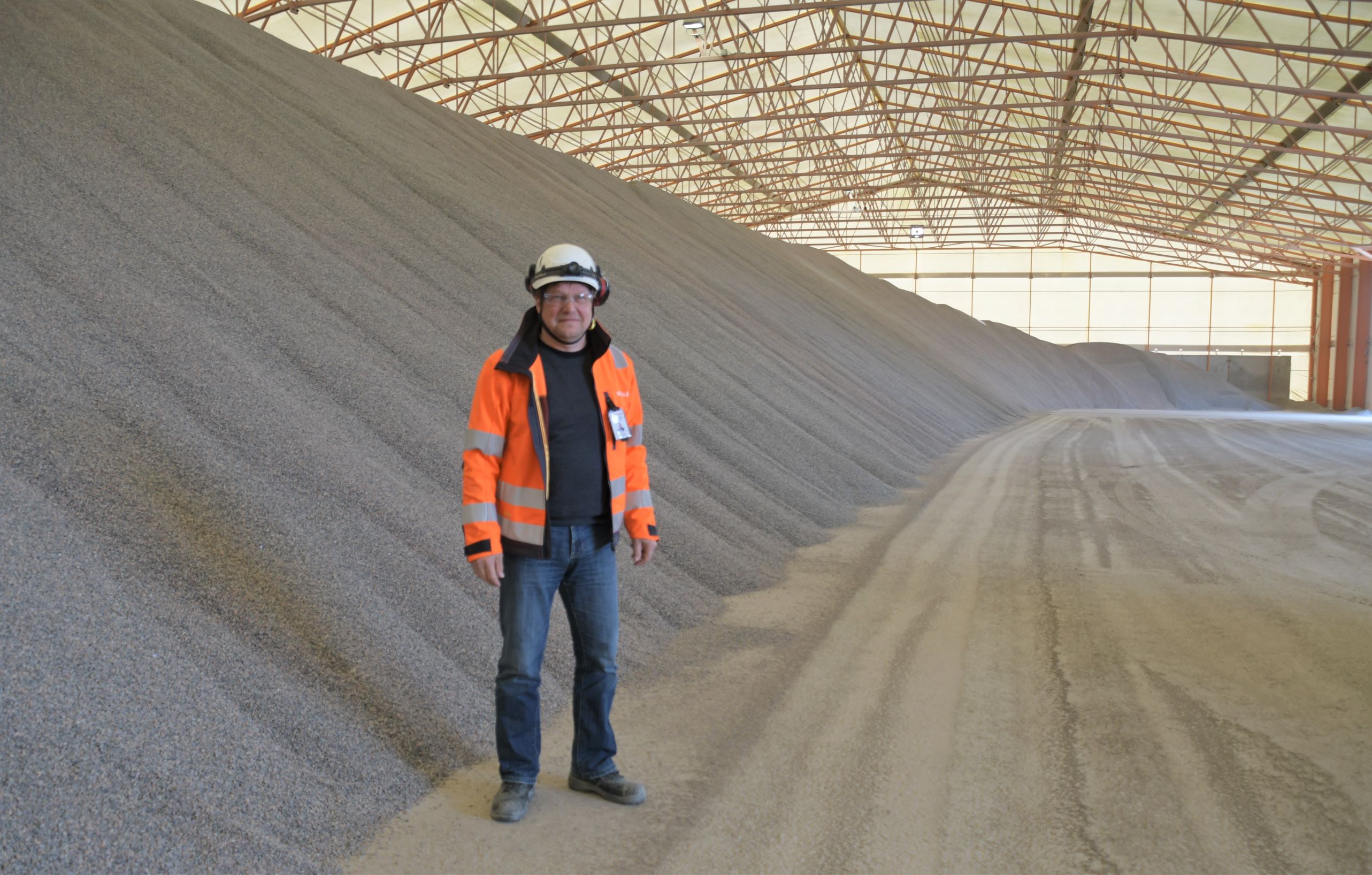
In the winter time when construction projects slow down, the production continues but the products are stored in preparation for when the construction work picks up again as the weather improves.
There is a vast amount of construction work going on in and around the Helsinki area at the moment, and the company are well placed to deliver. Construction is however, a hungry beast for materials and during the summer months Seepsula are very often selling more than they can produce, such is the demand for the products.
As impressive as the whole quarry operation is, the big attraction for me personally was to see the previously mentioned Komatsu PC2000-11, which has been purchased by Jarkan Maansiirto Oy the contractor who tackles all the excavation, truck loading and delivery of the rock to the main plant.
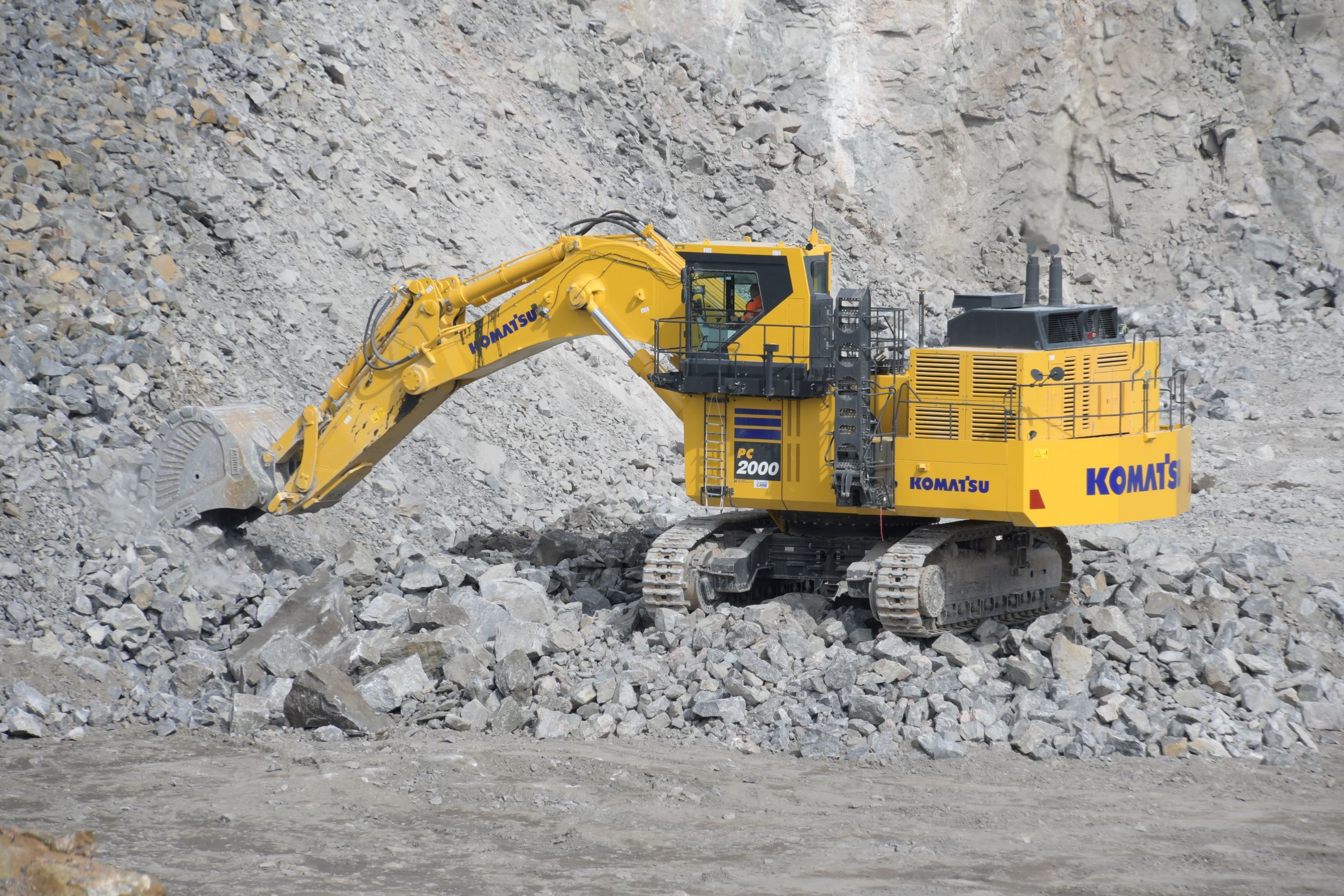
The 200-tonne machine, which is in backhoe configuration, replaces an outgoing 150-tonne class Liebherr R 9150B, which was originally delivered early in 2020.
The idea behind this substantial upgrade in size and power, is to increase the speed and efficiency of the whole operation, in addition to an increase in reliability. The Japanese manufactured machine has been supplied by the Finnish Komatsu main dealers Suomen Rakennuskone Oy. The machine is matched to Komatsu HD605 rigid dump trucks.
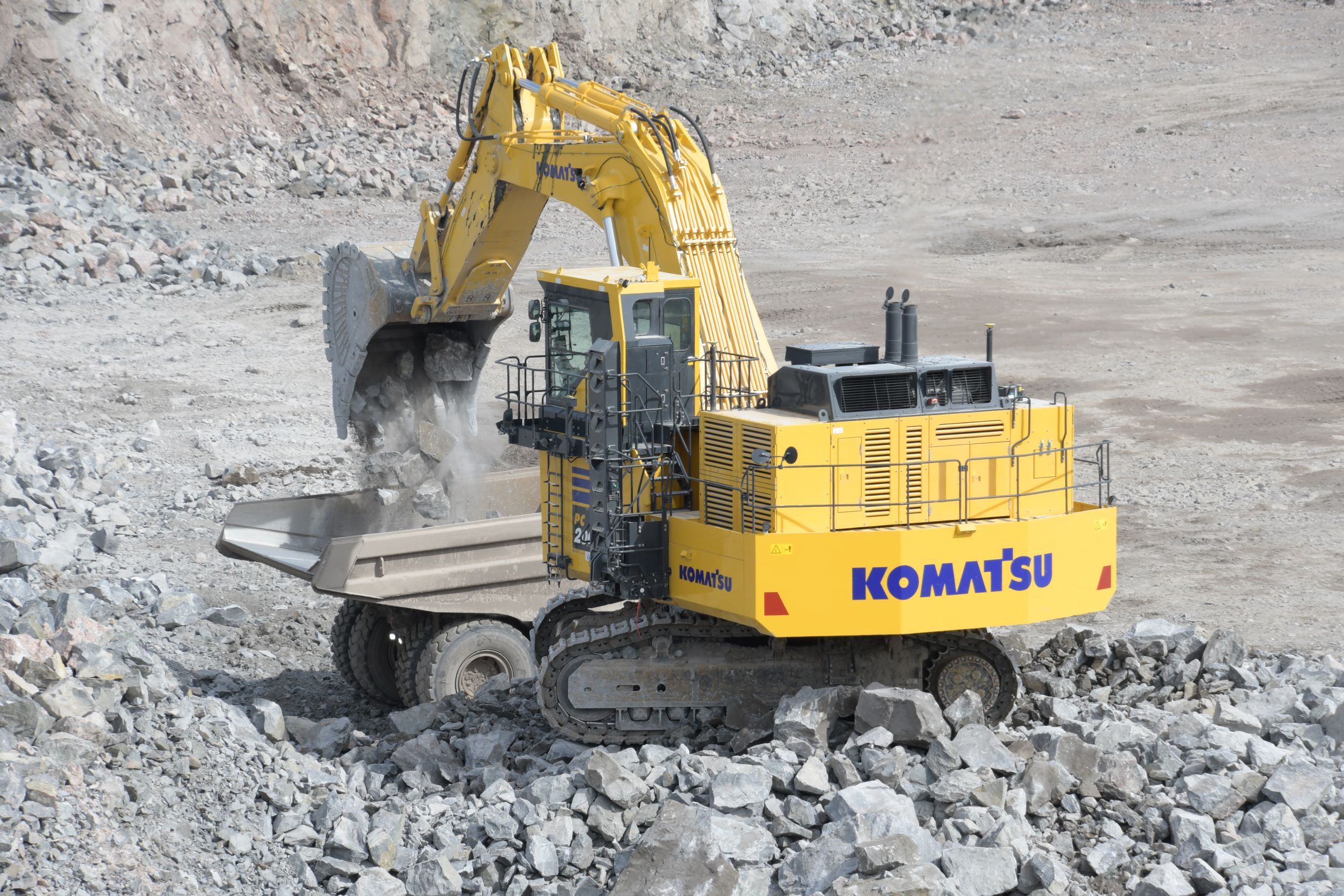
Talking about the new Komatsu machines performance so far, Seepsula Oy’s CEO Petri Ruostetoja said,” It looks like we are getting above average performance so far, in terms of faster times from loading to crusher, in the beginning however the operators had to adjust to being situated so high up, with the height of the cab being some six metres high, the operators reported some visibility issues in identifying the size of the rocks from such a long distance away”.
Ruostetoja continued,” In our operation the crusher can only handle rocks up to 1m in size so it’s important not to load anything larger that could potentially cause a blockage and hold up production, so it’s crucial to pick out rocks that are too large at the face, the operators have adjusted quickly to the distant view on the new machine and the performance has proven that. The higher viewing platform offers a great advantage when loading the trucks, as the operator has a great view into the truck skip body”.
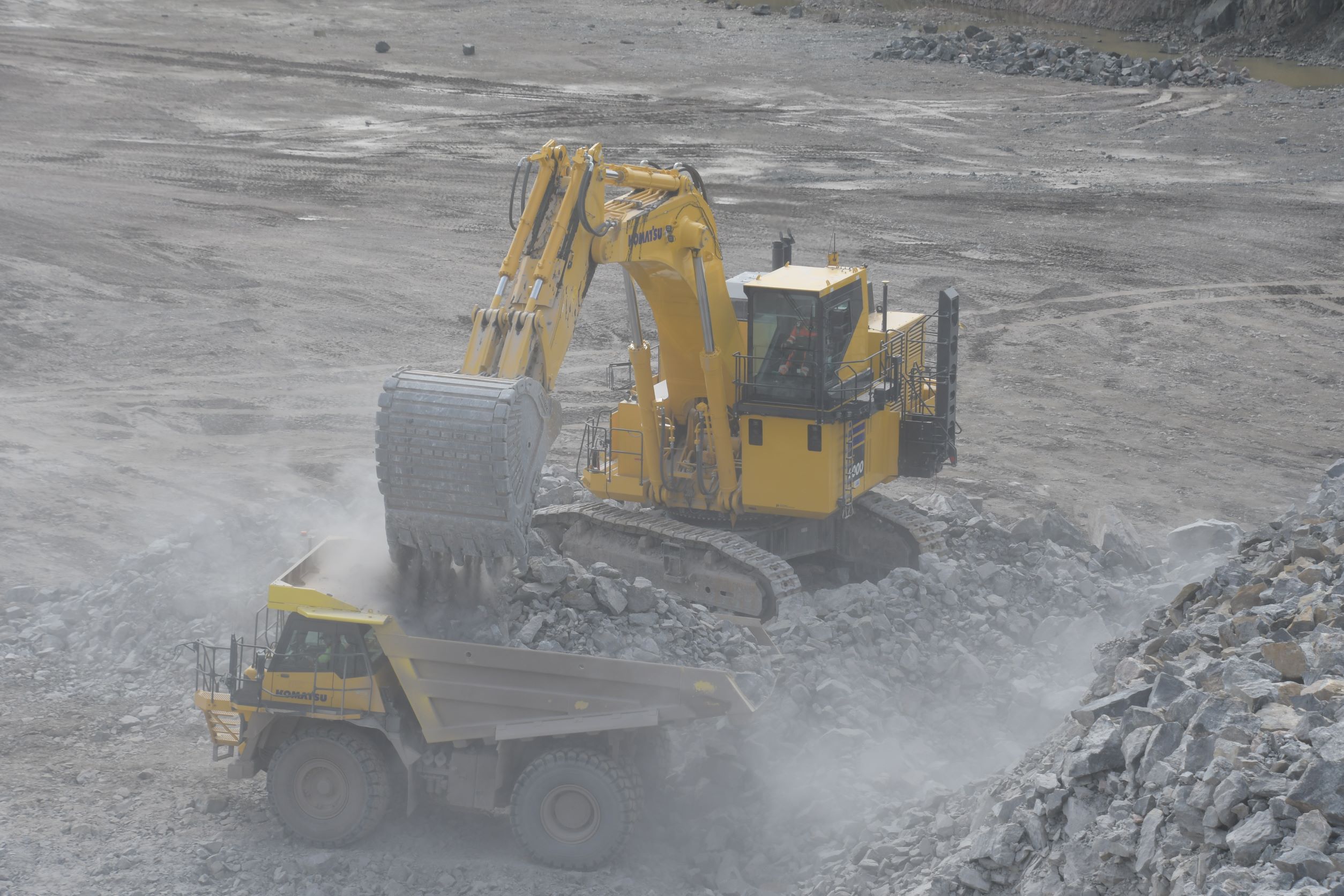
Expanding on this Timo Koiranen, Jarkan Maansiirto Oy's work manager, who has also spent some shifts operating the machine said,” The visibility into the trucks is so good, there is hardly any spillage of rocks when loading, and the extra size, reach and capability is a massive bonus. The hydraulics are super smooth and so precise, and you can pluck out rocks with incredible finesse, which is a real credit to the machines advanced hydraulic system”.
The machine has been equipped with a Miilux Oy Finnish built 11 cubic metre heavy duty rock bucket and having had good service from the 8.5 cubic metre bucket from the same manufacturer on the previous machine, they were keen to stick with the brand.
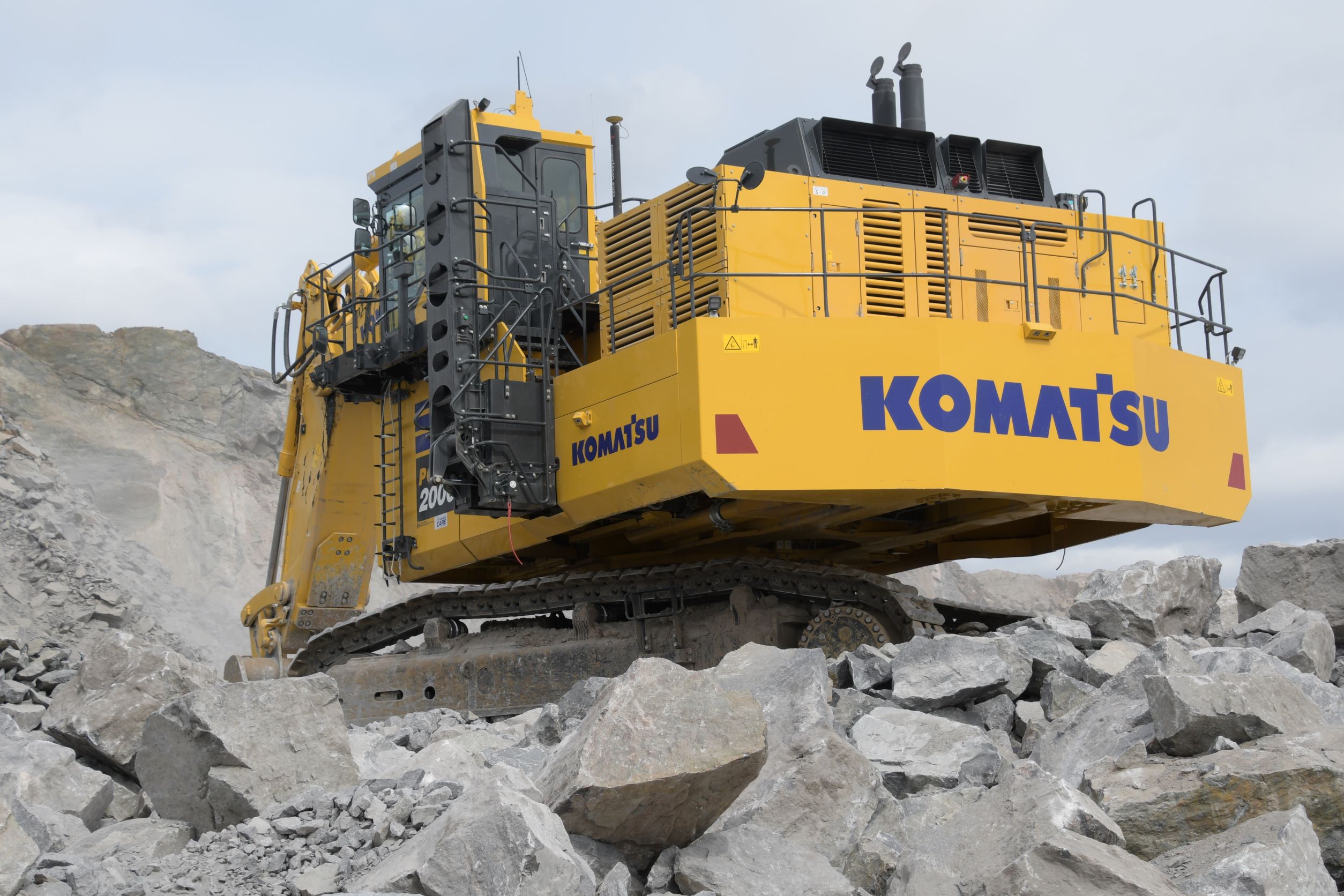
Armed with this bucket, the PC2000-11 is capable of loading the HD605 trucks in just four passes, which the machine does surprisingly quickly and effortlessly for such a large piece of equipment, it really is poetry in motion to see this in operation.
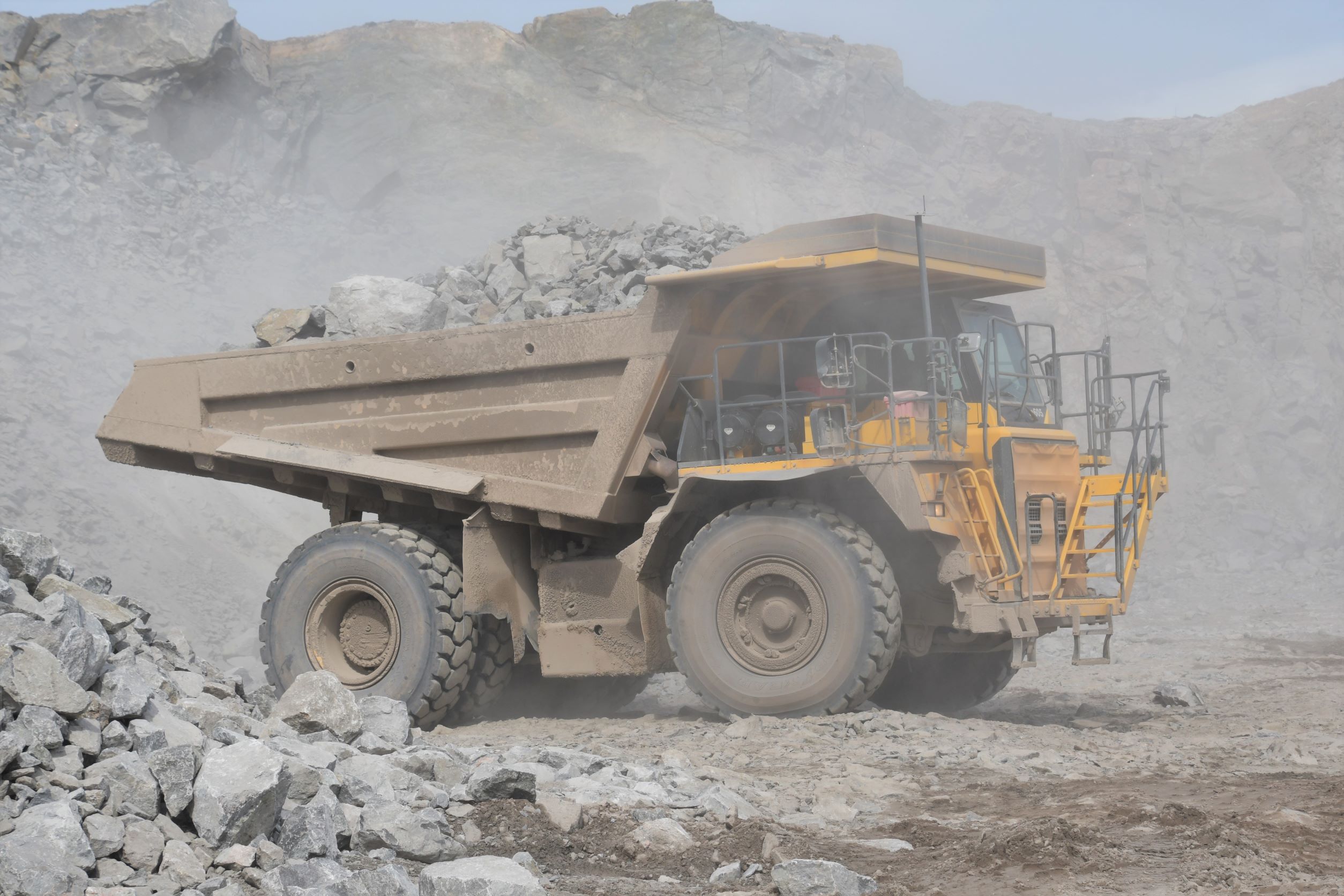
The machine works 16 hours a day, which is split into two shifts for the two operators, 6am – 2pm and 2pm – 10pm with a 30-minute break for refuelling and maintenance duties, this totals on average to around 3,500 hours of operation per year. The big Komatsu’s fuel tank holds 3,400 litres, enough to run the machine for around 25 to 27 hours. In the early days following its installation the machine’s fuel consumption had settled at around 100-125 litres per hour.
Tipping the scales with an operating weight of 201,500kgs, the PC2000-11 is powered by a Stage V emission compliant 12-cylinder Komatsu SAA12V140E diesel engine, which offers a power output rating of 794kw (1,065hp) @1,800rpm. This engine requires no AdBlue, but meets emission compliance by the use of exhaust-after treatment with two particulate filters, and exhaust gas recirculation.
At the heart of the machine four variable displacement piston hydraulic pumps are fitted offering a combined hydraulic oil flow output of 2,317 litres per minute.
This hydraulic system features a new Power Plus setting that according to Komatsu offers the end user up to 12% increase in productivity, but of course the expense of fuel consumption. A slightly less powerful P (Power Mode) can also be selected for maximum digging power but with better fuel efficiency.
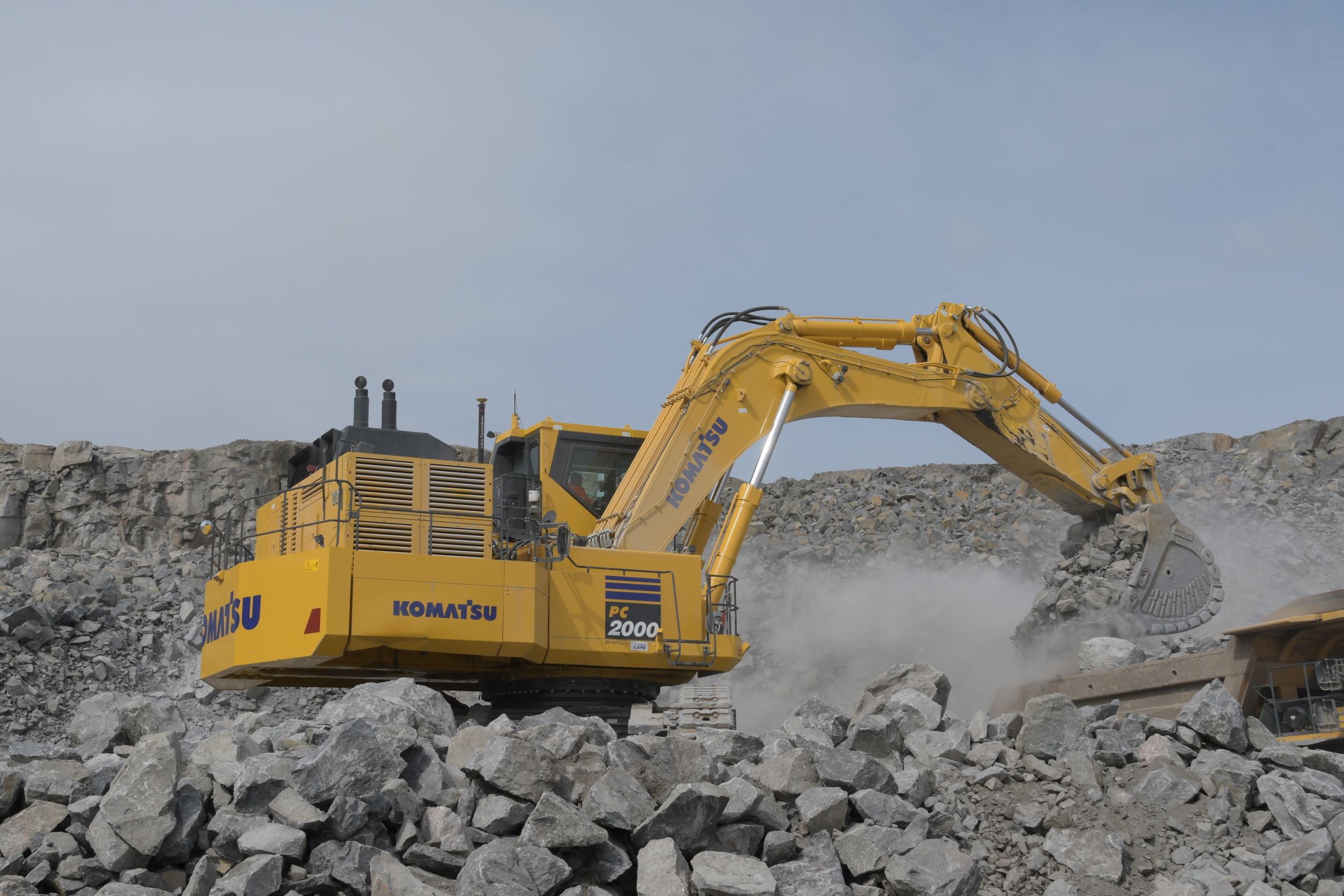
Smooth Mode can also be selected for less heavy and general cleaning up work, in this mode less hydraulic force is applied downwards. There is also a Heavy Lift Mode provided, in this mode lifting power is increased by 10%, however I would imagine this mode is rarely used or needed in this application.
One thing I noticed with this machine is how quiet it is when working, it was easy to hold a conversation with someone stood next to me, while in close proximity to the machine. Komatsu suggest that noise levels have been significantly reduced on the new model compared to the old PC2000-8 model, from 66.8dB to 64.1dB on the Dash-11, this has been achieved by the deployment of new insulation packages and structural changes to the bodywork.
Access to the cab is improved with a new hydraulically operated step ladder with integrated handrails. This also features an Auto-Lock system which will not allow the machine to move if the stairs are still in the down position. Lighting is also provided on the stairs to guide personnel during dark mornings and evenings, especially important in Nordic regions like Finland for example.

Further improving visibility, the machine's KomVision system which comprises a total of seven cameras helps to provide a bird's eye view of the machine on the cabin's 10.4-inch full colour screen.
Other safety features include a total of five engine shut-off emergency stop switches, two of which can be reached while standing on the ground, while the fuel supply can also be switched off quickly via a single lever.
Incredibly this machine is now the 5th PC2000 to be delivered into Finland, three of them are operated by E Hartikainen, while is operating at the Kevitsa Mine in Lapland, Northern Finland. This size class is becoming increasingly popular in quarry and mining applications where they can be paired with dump trucks ranging from 60 – 150-tonnes.
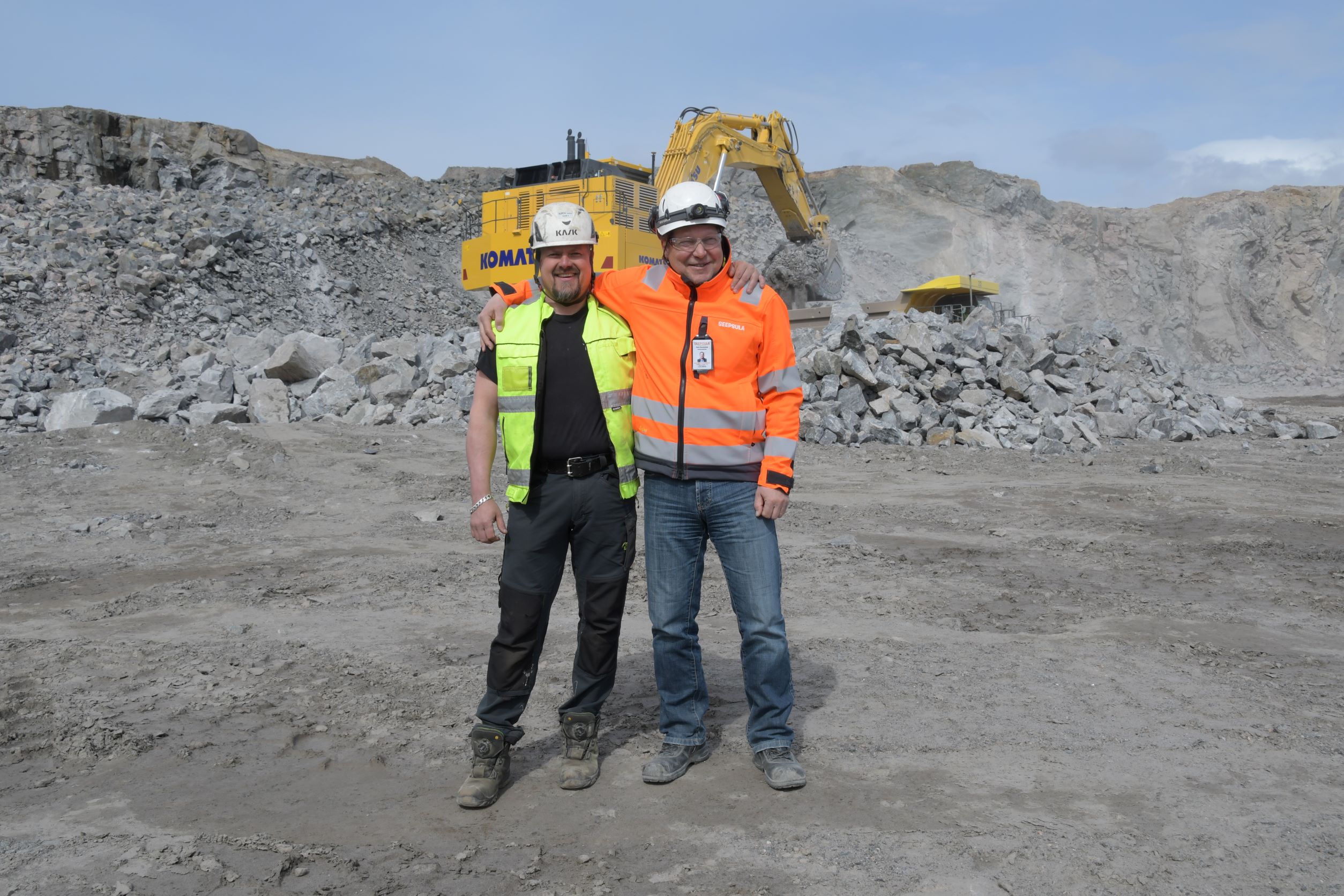
Pictured above: Left to Right. Timo Koiranen Site Supervisor Jarkan Maansiirto & Petri Ruostetoja CEO Seepsula Oy
It was clear to see that this example is already making a big impact in Seepsula, and it will be interesting to see how it performs in the long term in this application, with somewhere in the region of 3.3 million tonnes of stone being produced per year, that’s a 1/3 of Helsinki’s requirement, it’s going to be kept very busy! It certainly gave me a buzz to see it in action.
I would like to thank Petri Ruostetoja of Seepsula Oy, Timo Koiranen of Jarkan Maansiirto Oy, and of course my good friend and industry colleague Olli Päiviö for their assistance in making the visit possible.